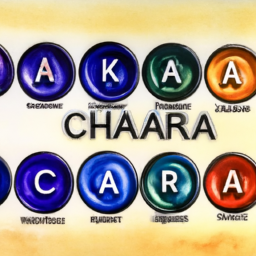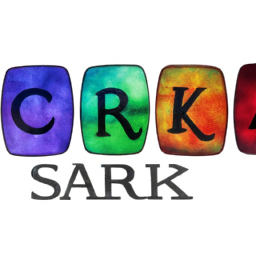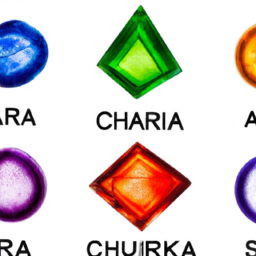
The Fascinating
Chakras, meaning “wheels” in Sanskrit, have become a popular term in the field of spirituality and holistic healing. These energy centers are believed to be the key to achieving balance and harmony in the mind, body, and spirit. They have been mentioned in ancient Hindu texts and teachings but have gained more mainstream recognition in recent years. Let’s delve into the rich history behind chakras and their significance in various cultures.
Ancient Hindu Beliefs
The earliest mention of chakras can be traced back to the ancient Hindu scriptures, specifically the Vedas and Upanishads. These texts describe the chakras as centers of subtle energy that run along the spine, starting from the base and ending at the crown of the head. It is believed that this energy, also known as prana, flows through the body and is responsible for maintaining physical, emotional, and spiritual well-being.
According to Hindu mythology, chakras are associated with different deities and elements. The root chakra, located at the base of the spine, is connected to the Earth element and the goddess Shakti. The sacral chakra, located below the navel, is associated with the water element and the god Vishnu. The solar plexus chakra, located in the abdomen, is linked to the fire element and the god Agni. The heart chakra, located in the center of the chest, represents the air element and the god Ishvara. The throat chakra, located in the throat, is connected to the ether element and the god Sadashiva. The third eye chakra, located between the eyebrows, is associated with the mind and the god Ardhanarishvara. And finally, the crown chakra, located at the top of the head, represents pure consciousness and the god Shiva.
It is believed that when all the chakras are balanced and in harmony, one can achieve enlightenment and reach a higher state of consciousness.
Buddhism and Taoism
The concept of chakras is not limited to Hinduism but also appears in other Eastern spiritual practices such as Buddhism and Taoism. In Buddhism, the chakras are referred to as “Dhātu” meaning elements and are believed to be gateways to enlightenment. According to Buddhism, the chakras are not physical entities but are representations of psychological states. Taoism, on the other hand, discusses chakras in the context of energy cultivation and harnessing internal energy for healing and self-improvement.
The Western Influence
The introduction of chakras in the Western world can be traced back to the early 20th century when British writer Arthur Avalon wrote about them in his book “The Serpent Power”. However, it wasn’t widely known or accepted until the 1970s when Indian spiritual teacher and guru, Maharishi Mahesh Yogi, introduced Transcendental Meditation in the West. This meditation technique includes the use of chakras for balancing and cultivating energy.
Since then, chakras have become a popular subject in the field of alternative medicine and New Age spirituality. Many holistic healers, yoga practitioners, and energy healers use chakra healing techniques to bring balance and harmony to the mind, body, and spirit.
Conclusion
The history behind chakras is vast and deeply rooted in Eastern spiritual practices. While the concept of these energy centers may differ slightly across cultures, the underlying belief remains the same – they are essential for achieving balance, harmony, and spiritual growth. Whether you choose to believe in the ancient teachings of chakras or not, their popularity continues to grow as more and more people seek holistic ways to heal and connect with their inner selves.





Fascinating! This is a fascinating look into the history of the Chakras!